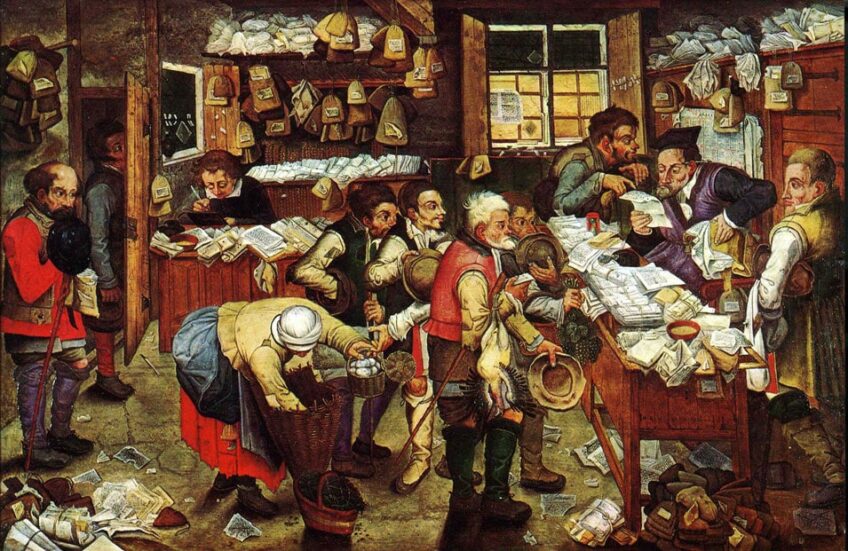Arkansas Gains Big on Capital Gains Tax Cut
According to Governor Asa Hutchinson, Arkansas ended fiscal year 2016 with a budget surplus of $177.4 million – a sizable $117.3 million higher than the previous fiscal year. Individual and corporate income tax revenues blew through expectations: individual income tax collections exceeded estimates by $82.1 million with refunds already factored in. In 2013, former Governor Mike Beebe signed into law a multi-year package that would reduce taxes by $10 million in fiscal year 2014, $85 million in 2015 and $140 million in 2016. Governor Hutchinson continued these efforts, increasing the 2015 tax cut to $100 million.
Among the most significant changes was an across-the-board cut in the state’s personal income tax rate, and an increase in the standard individual and married deductions. Furthermore, the capital gains tax exemption increased from 30 percent to 50 percent of gains, with a full exemption for gains in excess of $10 million. A recent OECD study of tax policy effects across multiple countries found taxes on capital are particularly harmful to economic growth, with corporate taxes, personal income taxes and capital gains taxes being the most harmful of all.
Arksansas’ multi-year tax package removed a slew of sales taxes affecting business-to-business transactions, such as logging equipment taxes for timber production and various other inputs. This will go far to stem the harmful effects of tax pyramiding in Arkansas. Tax pyramiding occurs when governments assess taxes at various levels of production and the price of goods that consumers ultimately pay is far higher than it should be.
Critics of Arkansas’s capital gains tax cuts insist that “scaling back taxes on capital gains income helps wealthy Arkansans almost exclusively.” However, wide-scale data does not support this claim. If windfall tax revenues, expanding employment and wage growth all while cutting taxes are not enough, a recent Gallup Poll found that around 50 percent of “lower-middle class” Americans are investing — and among those earning more than $70,000 per year that number climbs to 74 percent. Furthermore, among small business owners who received tax refunds this year, 75 percent said they intend to reinvest that money into their business for expansion initiatives, employee hiring or equipment acquisition. It follows then, that letting business owners keep more of their own money will help them reinvest even more and, in turn, grow economic opportunity and well-being.
A recent study by Jason Clemens, Charles Lammam, and Matthew Lo of the Fraser Institute found that, while capital gains taxes do generate revenues for government, the economic costs are significant: “Capital gains taxes impose costs on the economy because they reduce returns on investment and thereby distort decision making by individuals and business. This can have a substantial impact on the reallocation of capital, the available stock of capital, and the level of entrepreneurship.”
 As Brown University economist David Weil notes in the graph on the right, from his textbook Economic Growth, there is a highly significant and positive relationship between capital invested and worker wages. Groups arguing capital gains tax relief is hurting the poorest and “Arkansans are stuck in … low-paying jobs because most of the economic gains are going to the wealthiest” would be wise to consider how workers will suffer the most from attempts to hike capital gains taxes.
As Brown University economist David Weil notes in the graph on the right, from his textbook Economic Growth, there is a highly significant and positive relationship between capital invested and worker wages. Groups arguing capital gains tax relief is hurting the poorest and “Arkansans are stuck in … low-paying jobs because most of the economic gains are going to the wealthiest” would be wise to consider how workers will suffer the most from attempts to hike capital gains taxes.
Effects on growth and well-being aside, capital gains taxes also are an extremely unstable source of revenue. As noted in the Rich States, Poor States: ALEC-Laffer State Economic Competitiveness Index, the volatility of capital gains tax revenues introduces headaches into the budgeting process, and makes it more difficult for states to effectively plan and prioritize their spending.
States like Texas and Florida illustrate the massive production and employment benefits from such pro-growth policies. Texas and Florida consistently rank at the top in the nation for job growth, and a recent economic forecast put Florida on track to be the next $1 trillion economy by 2018. Texas and Florida ranked 1st and 18th respectively in economic performance in the most recent edition of Rich States, Poor States. In contrast, states with the highest tax burdens on capital rank much lower: Minnesota is 32nd and New Jersey is 47th.
If Arkansas wishes to remain economically competitive, lawmakers should focus on finding new and better ways to lower the government’s burden on entrepreneurs, and avoid slipping backwards into the very tax and spend policies that put the state in dire positions in years past. More growth means happier, healthier and wealthier people — and a government better equipped to effectively perform its core functions.

